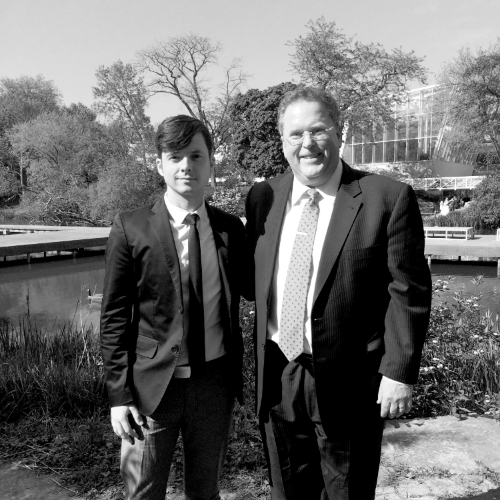Uncle Peter
On Sunday, July 19th, the discipline of landscape architecture in Chicago lost its de facto intellectual leader.
In addition to his irreplaceable role as father, husband, brother, and son, Peter Schaudt’s death leaves behind scores of landscape architects confronted with a confusing mixture of grief, perspective, and uncertain responsibility. I spent most of yesterday, as I’m sure other aspiring landscape architects who worked for Peter during our formative professional years did too, sifting through memories of the times we spent with him, and imagining the new memories we’ll never create. On behalf of those of us lucky enough to have crossed paths with Peter, and for the large number of us who considered Peter a close friend and mentor, I’d like to offer the following claims in his memory:
1. Peter understood landscape architecture as a collaborative practice that brings together other design fields and diverse stakeholders alike. For a generation of Chicago landscape architects who trained under Peter Schaudt’s mentorship, he reassured us that the field’s intellectual and professional underpinnings were robust enough to seriously engage with Chicago’s well-established architecture and engineering firms, and that friendly yet serious collaboration can produce ecologically conscious, democratic urban spaces.
2. Peter reinforced and extended Chicago’s rich landscape architectural history. Together, Peter’s education, teaching, practice, and professional lineage—Peter worked for Dan Kiley, a one-time apprentice for Warren Manning, who in turn worked for Frederick Law Olmsted—provided the discipline a local exception to worn references to historic landscape architects like Jens Jensen and Alfred Caldwell. These legacies, while foundational, still overshadow local contemporary practitioners; Peter moved beyond these figures while simultaneously honoring their legacies.
3. Peter was an inspiration to landscape architecture students from Chicago and the Midwest. His degrees from both UIC and Harvard encouraged designers like myself—Midwestern land-grant university BLA program graduates—that an Ivy League masters-level education was possible; yet his work demonstrated that such a blend of higher education also produces a particularly advantageous point of view—one sensitive to locally-specific contexts, yet conscious of broader disciplinary currents.
4. Peter was a Chicago-based touchstone for the discipline internationally. While Peter was well known in his hometown of Chicago, his presence at east coast schools like Harvard’s Graduate School of Design was still felt three decades after his graduation. In New York, Los Angeles, or Toronto, Peter’s name is synonymous with Chicago landscape architecture.
In November the American Society of Landscape Architects will hold its annual meeting in Chicago, an event normally looked forward to as a chance to reconnect with colleagues and evaluate recent disciplinary advancements. Though Peter’s optimism for the city, for landscape architecture, and for life will be noticeably absent from the gathering, his spirit will surround us in his works of landscape architecture that sustain Chicago’s public realm; spaces that continue to influence not only his friends, family, and colleagues, but those who never met him, the public whom he ultimately designed for.
-Conor O'Shea. Tuesday, July 21st, 2015. Chicago, IL.
Above image: The author and Peter Schaudt. May, 2015. Chicago, IL.
